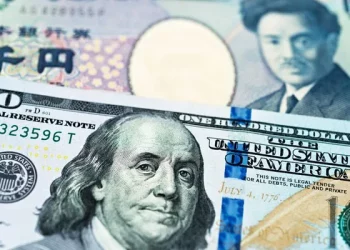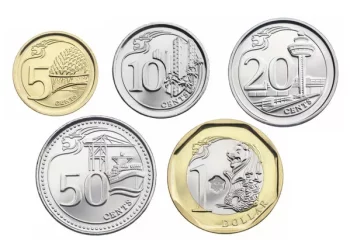In today’s interconnected world, foreign exchange (forex or FX) trading plays a significant role in the movement of currencies, whether for individuals, businesses, or investors. Currency exchange rates determine how much one currency is worth in relation to another. In this article, we will explore how to convert 20,000 rupees into dollars and understand the factors that influence currency conversions in the global foreign exchange market.
Understanding the Basics of Currency Conversion
Before delving into the specifics of how much 20,000 rupees convert to dollars, it’s important to grasp the fundamentals of currency exchange. Currency exchange is the process of converting one national currency into another. The exchange rate is the rate at which one currency can be exchanged for another. This rate fluctuates constantly based on various economic and geopolitical factors, and it is determined by the forces of supply and demand in the market.
For example, the value of the Indian rupee (INR) relative to the US dollar (USD) can be different from the value of the Japanese yen (JPY) against the dollar, even if both currencies are exchanged through the same currency pairs. Therefore, the value of 20,000 rupees in terms of dollars will depend on the current exchange rate between the Indian rupee and the US dollar.
What is the Current Exchange Rate?
To convert 20,000 rupees to dollars, we need to know the current exchange rate between the Indian rupee (INR) and the US dollar (USD). This rate fluctuates on a daily basis and is influenced by several factors, including:
Interest Rates: The interest rates set by central banks like the Reserve Bank of India (RBI) and the Federal Reserve (Fed) in the United States play a crucial role in determining currency values. When the US raises its interest rates, the dollar tends to appreciate, making it more expensive to exchange other currencies for dollars.
Inflation Rates: The relative inflation rates of two countries can affect the exchange rate. If India experiences higher inflation compared to the United States, the value of the rupee may depreciate against the dollar.
Political Stability: Countries with stable governments and economies often see their currencies strengthen because investors feel more secure investing in that country’s assets. Conversely, countries with political instability may see their currency value decrease.
Economic Performance: The overall economic health of a country, including GDP growth, unemployment rates, and trade balance, also affects currency values. A strong economy usually leads to a stronger currency.
Market Sentiment and Speculation: Currency exchange rates are also affected by traders’ sentiment and speculative activity in the market. News, rumors, and global events can all influence market behavior, causing sudden fluctuations in the value of currencies.
Example Conversion: 20,000 Rupees to Dollars
At the time of writing, the exchange rate between the Indian rupee (INR) and the US dollar (USD) is approximately 1 USD = 83 INR. However, it’s essential to note that exchange rates are subject to change and may vary slightly depending on the source you use for conversion (e.g., banks, currency exchange services, or online platforms). Therefore, let’s use the approximate exchange rate to calculate the conversion of 20,000 rupees into dollars.
20,000 INR÷83 INR/USD=240.96 USD
Thus, 20,000 Indian rupees would be equivalent to approximately 240.96 US dollars based on the current exchange rate of 1 USD = 83 INR.
Understanding Currency Pairs and Forex Market
In the forex market, currencies are traded in pairs. A currency pair represents the value of one currency against another. For example, the pair USD/INR represents how many rupees (INR) are needed to buy one US dollar (USD). The value of this pair changes throughout the day based on supply and demand factors.
There are three main types of currency pairs in the forex market:
Major Pairs: These include currencies from the most widely traded economies, such as USD/INR, EUR/USD, and GBP/USD. These pairs usually have high liquidity and tighter spreads, which means the cost of trading is relatively low.
Minor Pairs: These pairs do not include the US dollar but involve other major currencies, such as EUR/GBP, GBP/JPY, or EUR/JPY. Minor pairs may have less liquidity, making them more volatile than major pairs.
Exotic Pairs: Exotic currency pairs involve a major currency paired with the currency of a developing or emerging market. Examples include USD/TRY (US dollar to Turkish lira) or EUR/INR (Euro to Indian rupee). These pairs tend to have wider spreads and may carry higher risk due to lower liquidity and less stable markets.
The exchange rate of a currency pair is determined by the relative demand for each currency. For example, if more traders want to buy the US dollar relative to the Indian rupee, the exchange rate will rise (the dollar strengthens against the rupee). Conversely, if more traders are buying the Indian rupee against the US dollar, the rupee will strengthen, and the dollar will weaken.
Factors Influencing the Exchange Rate Between INR and USD
The exchange rate between the Indian rupee (INR) and the US dollar (USD) is affected by a variety of factors. Some of these are domestic to India, while others are global in nature:
Inflation and Economic Growth in India: If India’s inflation rate is higher than that of the US, the Indian rupee may weaken relative to the US dollar. Similarly, if India’s economy is growing faster than the US economy, the rupee may appreciate due to increased foreign investment in Indian assets.
Trade Balance: The trade balance of a country refers to the difference between its exports and imports. India’s trade balance with the US is important because if India exports more goods and services to the US than it imports, there will be higher demand for the rupee, potentially leading to an appreciation of the currency.
Foreign Exchange Reserves: The Reserve Bank of India (RBI) maintains foreign exchange reserves, which can influence the INR/USD exchange rate. When the RBI buys or sells foreign currency, it can affect the supply and demand for rupees, which in turn impacts the exchange rate.
Interest Rates: As mentioned earlier, interest rates set by the RBI and the Federal Reserve play a major role in currency movements. If the Federal Reserve raises interest rates, the US dollar tends to strengthen because higher rates attract foreign investment.
Geopolitical Events: Global events such as political instability, natural disasters, and wars can create uncertainty in financial markets. Investors often seek safe-haven currencies like the US dollar during times of global turmoil, which can cause the rupee to depreciate.
Exchange Rate Fluctuations: Risk and Opportunity
The forex market is known for its volatility, and exchange rates fluctuate constantly. For individuals and businesses engaged in international trade or investments, this volatility can present both risks and opportunities.
For example, if you are an Indian exporter selling goods to the US and you receive payment in US dollars, fluctuations in the INR/USD exchange rate could affect the value of your income in rupees. If the rupee strengthens against the dollar, your earnings in rupees will be worth less when converted. Conversely, if the rupee weakens, your earnings in rupees will increase.
On the other hand, if you are an individual or business in India looking to travel to the US or import products from the US, a stronger rupee will benefit you by reducing the cost of your transactions in dollars.
Strategies for Hedging Currency Risk
Businesses and investors who are exposed to exchange rate fluctuations can use various strategies to hedge against currency risk. Some of the most common hedging strategies include:
Forward Contracts: A forward contract is an agreement to exchange a specific amount of one currency for another at a predetermined exchange rate on a future date. This allows businesses to lock in a specific exchange rate and avoid the risk of unfavorable currency movements.
Currency Options: A currency option gives the holder the right (but not the obligation) to exchange a currency at a specified rate within a certain timeframe. This provides more flexibility than a forward contract.
Currency Swaps: A currency swap involves exchanging cash flows in one currency for cash flows in another currency. This can be used to hedge long-term currency risk.
Diversification: Diversifying investments across different currencies and markets can help mitigate the impact of exchange rate fluctuations on an overall portfolio.
Conclusion
Converting 20,000 rupees into US dollars involves understanding the current exchange rate between the Indian rupee (INR) and the US dollar (USD). Based on the current exchange rate of approximately 1 USD = 83 INR, 20,000 rupees would convert to around 240.96 US dollars.
However, it is important to note that exchange rates are subject to fluctuations due to a variety of factors, including interest rates, inflation, trade balances, political stability, and global economic conditions. As such, individuals and businesses involved in currency exchanges should stay informed about market trends and consider using hedging strategies to manage currency risk.
In conclusion, while converting currencies might seem straightforward, the forex market is highly complex and influenced by a multitude of factors. Whether you are a traveler, an investor, or a business owner, understanding the dynamics of currency exchange is crucial for making informed decisions in today’s global economy.
Related Topics:




























